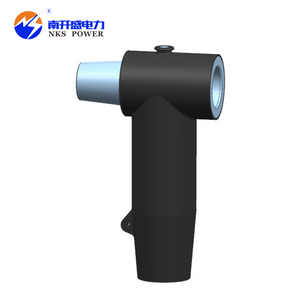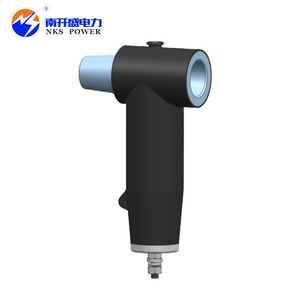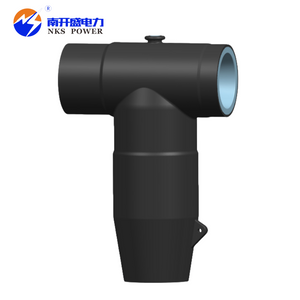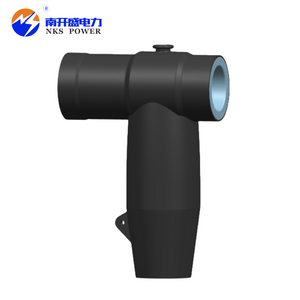24kV RMU Test Tooling for type-C Casing product introduction:
The 24kV Type C bushing test tooling consists of an inner cone test tooling and a cold shrink termination. The surface of the inner cone test tooling is sprayed with conductive silica gel to provide shielding and anti-interference. The cold shrinkage termination is used to increase the creepage distance and can be directly connected to the Type C of the equipment. The outer cone bushing coupling eliminates the need to make additional test cables and provides lead wires for the high voltage side of the ring main unit or for factory testing. On-site acceptance of power distribution equipment. It has good insulation performance, extremely low partial discharge, easy installation and disassembly, and high efficiency.
The product matches the C-type bushing in EN50180-50181
Implementation standards: IEC60502.4, GB/T12706.4
24kV RMU Test Tooling for type-C Casing product features:
Silicone material with excellent electrical properties
The pre-mold is formed in one piece and the partial discharge is extremely small.
Cold shrink termination to increase creepage distance
Reusable, easy to install and disassemble
Electrical performance parameters of 24kV RMU Test Tooling for type-C Casing:
NKS-24CS-01 | Items | Parameter |
| Technical Parameters | System Voltage | 24kV |
Rated current | 630A |
Frequency withstand voltage(AC) | 54kV/5min |
Partial Discharge | 20kV<5pC |
Impulse voltage | 125kV |
24kV RMU Test Tooling for type-C Casing application:
1. Wipe the inside of the test tooling and the outside of the epoxy casing with cable cleaning paper. After the detergent has completely evaporated, apply silicone grease evenly.
2. Screw the test tooling into the epoxy sleeve and rotate it clockwise at 30N/m until it is tightened in place. Just turn it counterclockwise when disassembling.
3. Connect the end conductor of the test tooling to the high-voltage lead.
4. Conduct the test after the grounding wires of each part are reliably grounded.




















